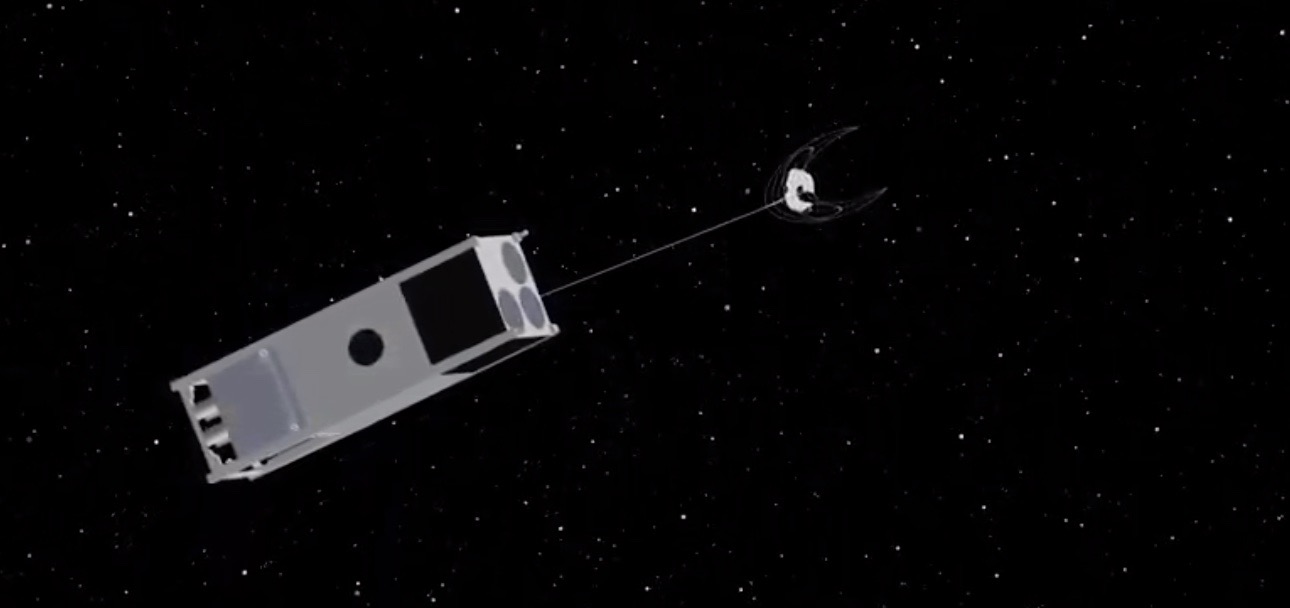A little spacecraft could soon make a big contribution in the fight against space junk.
Researchers are developing a cleanup cubesat called OSCaR (Obsolete Spacecraft Capture and Removal), which would hunt down and de-orbit debris on the cheap using onboard nets and tethers. And OSCaR would do so relatively autonomously, with little guidance from controllers on the ground.
"We tell OSCaR what to do and then we have to trust it," project leader Kurt Anderson, a professor of mechanical, aerospace and nuclear engineering at Rensselaer Polytechnic Institute in New York, said in a statement.
Related: Space Junk Cleanup: 7 Wild Ways to Destroy Orbital Debris
"That’s why this problem actually gets very hard, because we are doing things that a big, expensive satellite would do, but in a cubesat platform," Anderson added.

Space junk is a big problem, and it's only getting worse. Nearly 129 million pieces of debris are zooming around Earth at the moment, about 34,000 of which are at least 4 inches (10 centimeters) wide, according to European Space Agency estimates.
These objects are moving so fast — 17,500 mph (28,200 kilometers/h) in low-Earth orbit, for example — that even the smallest of them could damage a satellite.
Get the Space.com Newsletter
Breaking space news, the latest updates on rocket launches, skywatching events and more!
"There’s a real problem," said Anderson, who's developing OSCaR with his students. "The amount of observed debris is increasing faster now than the rate that we’re actually putting more objects into space. This is an indication that [the] earliest stages of the Kessler Syndrome may be upon us."
The Kessler Syndrome is a crippling cascade of collisions that could occur if the concentration of orbital debris becomes dense enough. Each collision would produce more debris, increasing the frequency of future smash-ups, and so on, potentially making wide swathes of Earth orbit unusable.
There's growing recognition in the spaceflight community that we need to tackle the space-junk problem, and soon. Scientists and engineers are devising ways to de-orbit satellites efficiently after they finish their missions — through the use of friction-increasing "drag sails," for example.
Researchers are also studying ways to remove some of the most dangerous junk cluttering up Earth's orbit. That's where OSCaR comes in.
The spacecraft is a 3U cubesat, meaning that it measures about 12 inches long by 4 inches wide by 4 inches high (30 centimeters by 10 cm by 10 cm). OSCaR will be very capable for its small size, featuring onboard navigation and communication gear; power, propulsion and thermal-control systems; and four net-launching gun barrels.
Each OSCaR craft will be capable of capturing and removing four pieces of debris, Anderson said. When that work is done, the cleanup cubesat will de-orbit itself within five years.
"There’s an informal agreement that’s been in place for a few years that people who put space objects up there should be practicing good citizenship," Anderson said. "We envision a day where we could send up an entire flock, or squadron, of OSCaRs to work jointly going after large collections of debris."
The team aims to test OSCaR on the ground sometime this year, Anderson added. A test in space will follow at some point, if all goes according to plan.
- CubeSats: Tiny, Versatile Spacecraft Explained (Infographic)
- Space Junk Explained: How Orbital Debris Threatens Future of Spaceflight (Infographic)
- This Space Junk Removal Experiment Will Harpoon & Net Debris in Orbit
Mike Wall's book about the search for alien life, "Out There" (Grand Central Publishing, 2018; illustrated by Karl Tate), is out now. Follow him on Twitter @michaeldwall. Follow us on Twitter @Spacedotcom or Facebook.
Join our Space Forums to keep talking space on the latest missions, night sky and more! And if you have a news tip, correction or comment, let us know at: community@space.com.

Michael Wall is a Senior Space Writer with Space.com and joined the team in 2010. He primarily covers exoplanets, spaceflight and military space, but has been known to dabble in the space art beat. His book about the search for alien life, "Out There," was published on Nov. 13, 2018. Before becoming a science writer, Michael worked as a herpetologist and wildlife biologist. He has a Ph.D. in evolutionary biology from the University of Sydney, Australia, a bachelor's degree from the University of Arizona, and a graduate certificate in science writing from the University of California, Santa Cruz. To find out what his latest project is, you can follow Michael on Twitter.









